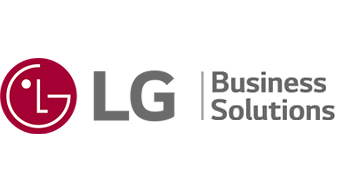Materials for Antimicrobial
-
LG Antimicrobial is an antimicrobial agent with a wide range of application, such as plastics, coatings, fibers, foam, and more. LG Electronics develops optimized solutions for antimicrobial protection that do not diminish the physicochemical properties of your product or your manufacturing process.
Material_Hero.jpg)
Material_Hero.jpg)
Plastics Enhance the value of your plastic and polymer materials with LG Antimicrobial.
Coating Protect your surfaces from unwanted microbial growth.
Textiles Keep away bacteria, discoloring and odors from your fibers and textiles.
Foam Keep your foam protected and no longer vulnerable to microbial growth.
Antimicrobial Plastics & Polymers
Material_Body_01.jpg)
Material_Body_01.jpg)
-
What is Antimicrobial Plastic?
Antimicrobial Plastic inhibits the growth of various microorganisms and unwanted bacteria. LG Antimicrobial, which comes in powder form comprised of inorganic compounds, maintains the antimicrobial agent's efficacy without disintegration or alteration while being applied to plastic material in high-temperature processes. Antimicrobial Plastic applied with antimicrobial agent extends the overall product lifecycle by maintaining cleaner product surfaces. Our antimicrobial agent manufacturing technology provides customized solutions optimized for various partners’ needs to offer a differentiated hygienic value for customers.
-
Treatable Plastics & Polymer Materials
LG Antimicrobial is applicable for all types of plastics and polymers in products that our customers may use. Not to mention, it can easily be applied to more challenging materials such as engineering plastics, rubbers and more.
-
![Polypropylene(PP)]()
Polypropylene(PP)
-
![Polystyrene(PS)]()
Polystyrene(PS)
-
![Acrylonitrile Butadiene Styrene(ABS)]()
Acrylonitrile Butadiene Styrene(ABS)
-
![Polyvinyl Chloride (PVC)]()
Polyvinyl Chloride (PVC)
Material_Body_04.jpg)
Where Can It Be Used?
Antimicrobial Paints & Coating
Material_Body_05.jpg)
Material_Body_05.jpg)
-
What Is Antimicrobial Coating?
Antimicrobial coating treats product surfaces with antimicrobial agents to inhibit the growth of microorganisms or unwanted bacteria. Made of inorganic compounds, LG Antimicrobial is easily applied in liquid or powder form during the antimicrobial coating process. In general, LG Antimicrobial do not easily react to the basic resin, enabling a stable performance within the agent. It’s also applicable to thermoplastic resin, thermosetting resin, other cross-linking or curing paints and coats. Coats and paints with antimicrobial agents help keep product surfaces clean by inhibiting microbial growth.
-
What Is the Coating Process?
Spray coating is a coat that forms a thin film by mixing resins with a solvent and applying it thinly to the surface of an object. It has the advantage of being able to coat every corner with various colors. Powder coating is a technology that attaches 100% solid powder to the surface by electrostatic spraying, etc., then heats it to form a coating film. In general, it has superior adhesion and chemical resistance compared to spray coating. There are various other processes, including IML hard coating. LG Antimicrobial can be easily applied to these processes to increase surface retention.
-
![Spray coating]()
Spray coating
-
![Painting]()
Painting
-
![Powder coating]()
Powder coating
Antimicrobial Textiles & Fibers
Material_Body_07.jpg)
Material_Body_07.jpg)
-
What Are the Benefits of Fiber Applied with LG Antimicrobial?
LG Antimicrobial can be effectively applied in various forms of powder, slurry, or liquid during all stages of production, adding resistance against microorganisms without compromising the existing characteristics of the textile. This antimicrobial additive is applicable not only to natural fibers such as cotton and wool, but also to synthetic fibers or blended fabrics such as polyester and nylon. It resists stains and odors on clothing and home textile products. As a result, textiles and fabrics treated with LG Antimicrobial stay cleaner for a longer periods of time.
-
![Polypropylene(PP)]()
Polypropylene(PP)
-
![Polyethylene terephthalate (PET)]()
Polyethylene terephthalate (PET)
-
![Polyethersulphone (PES)]()
Polyethersulphone (PES)
-
![Polyvinylidene fluoride (PVDF)]()
Polyvinylidene fluoride (PVDF)
-
![(PC)Material_Body_08-1]()
The clothes we wear can become a good environment for microorganisms to grow due to sweat and daily dust. This is the main cause of bad odor, damage and discoloration of fabrics. LG Antimicrobial can minimize such effects caused by the microorganisms.
-
![(PC)Material_Body_08-2]()
Filters are generally made of synthetic fiber material like PP or PET. Therefore, like clothes, high-humidity, high-contamination, and high-dust-exposure settings create an ideal environment for microbial growth. Like general textiles, LG Antimicrobial can also keep filters clean.
Antimicrobial Foam
Material_Body_09.jpg)
Material_Body_09.jpg)
-
Foam products have an insulating function in general, which makes it a good environment for bacteria and mold growth. Mattresses, seats, or exercise mats are popular foam products that require protection against microbial growth caused by frequent exposure to sweat, dead skin cells and other bodily particles. LG Antimicrobial is non-reactive with the foam's raw material and can provide excellent inhibitory effects against microbial growth. Antimicrobial foam products with LG Antimicrobial can be applied to various industries including home appliances, bedding, automobiles, furniture and more.
-
![Polyethylene terephthalate (PET)]()
Polyethylene terephthalate (PET)
-
![Polystyrene (PS)]()
Polystyrene (PS)
-
![Building material]()
Building material
-
![Vehicle interior]()
Vehicle interior
-
![Healthcare equipment]()
Healthcare equipment
The product may not be available for usage on certain markets because of different regulations. Please check availability on your country through advancedmaterials@lge.com.
(The antimicrobial product is not intended for the US and EU market)



Material_Body_02.png)
Material_Body_02.png)
Material_Body_03.jpg)
Material_Body_06-1.jpg)
Material_Body_06-2.jpg)
Material_Body_06-3.jpg)
Material_Body_08-1.jpg)
Material_Body_08-2.jpg)
Material_Body_10-1.jpg)
Material_Body_10-2.jpg)
Material_Body_10-3.jpg)